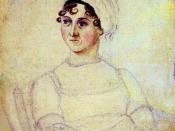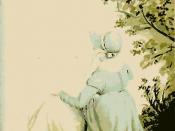This essay deals with the status of upper- and upper middle class British women from the Victorian era to the twenty-first century. I will look at how women came to be equal with men and what the steps leading to equality were. However, the main focus of the essay will be on how women are treated in Sense and Sensibility by Jane Austen, how it reflects its time and how you can see the conditions as a backdrop for the fictional story. I will look at the privileges women had, and also examine the limitations and norms they had and the obligations society forced on them.
Jane Austen (1775-1817) is considered one of the most significant Victorian authors because of her light irony, humour and language. Sense and Sensibility is not her most popular novel, but is read 200 years after its publication in 1811. It deals with the sisters Elinor and Marianne Dashwood, and the life, joy and sorrow of the upper-middle-class family.
The essay assumes that the reader is familiar with the novel.
It is interesting to see how close but at the same time distant the conditions are compared to today. There are still many "standards" or models we should obey, but luckily nowadays they are not rules but rather considered basic rituals of life, like marriage. Before being married to someone you didn't love wasn't at all unusual, and a far better choice than to not marry; now it's not a big deal if you don't, but most people still find someone they want to spend the rest of their lives with.
As well as sources cited in the text, the following edition of Sense and Sensibility was used:
Jane Austen: Sense and Sensibility, Bloomsbury Publishing Plc 1996.
Women in the Victorian age and in "Sense...


